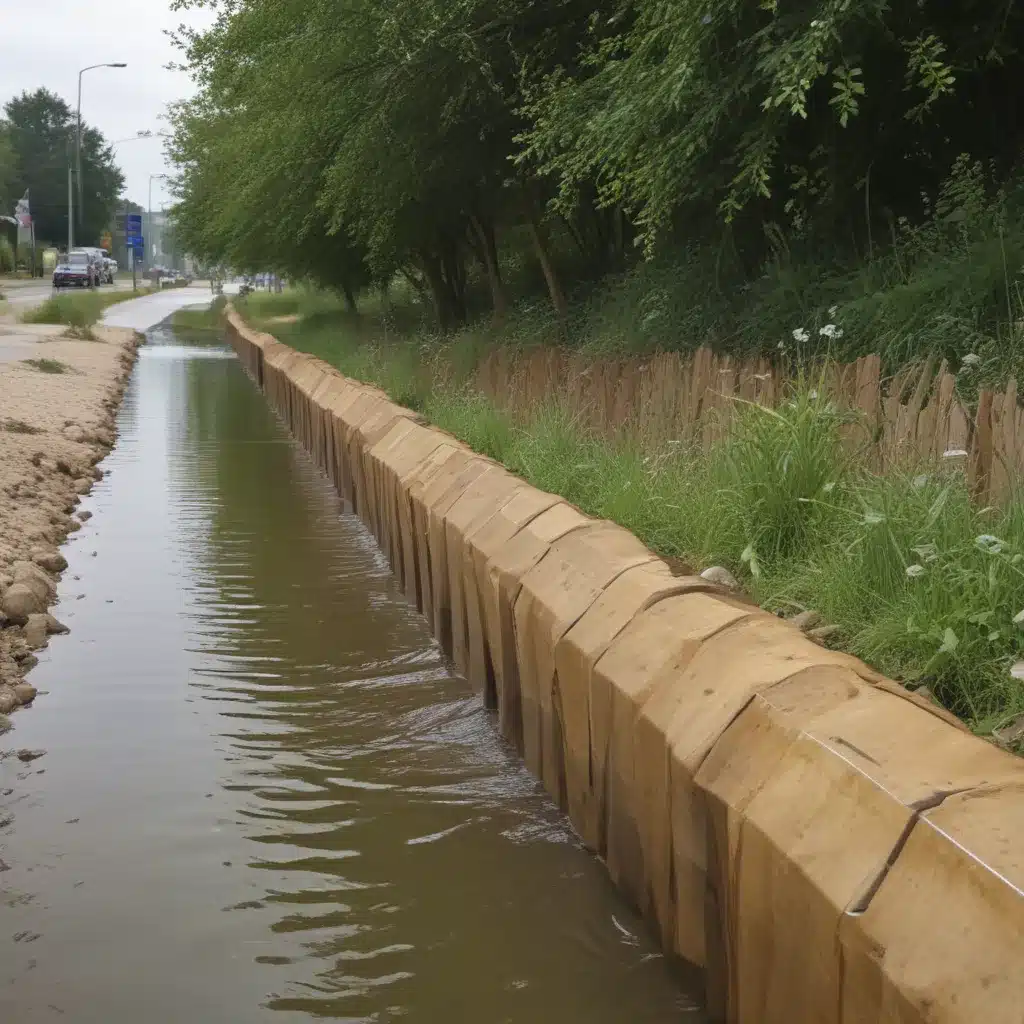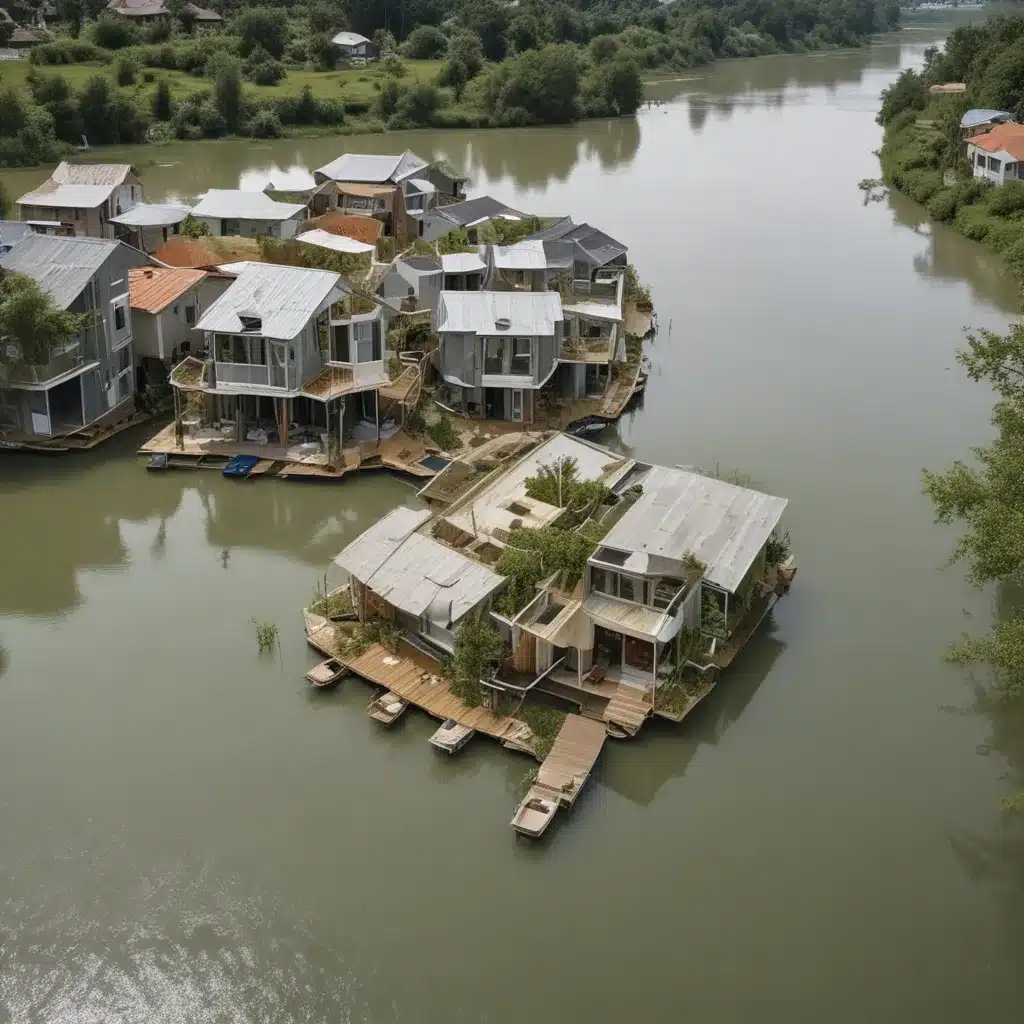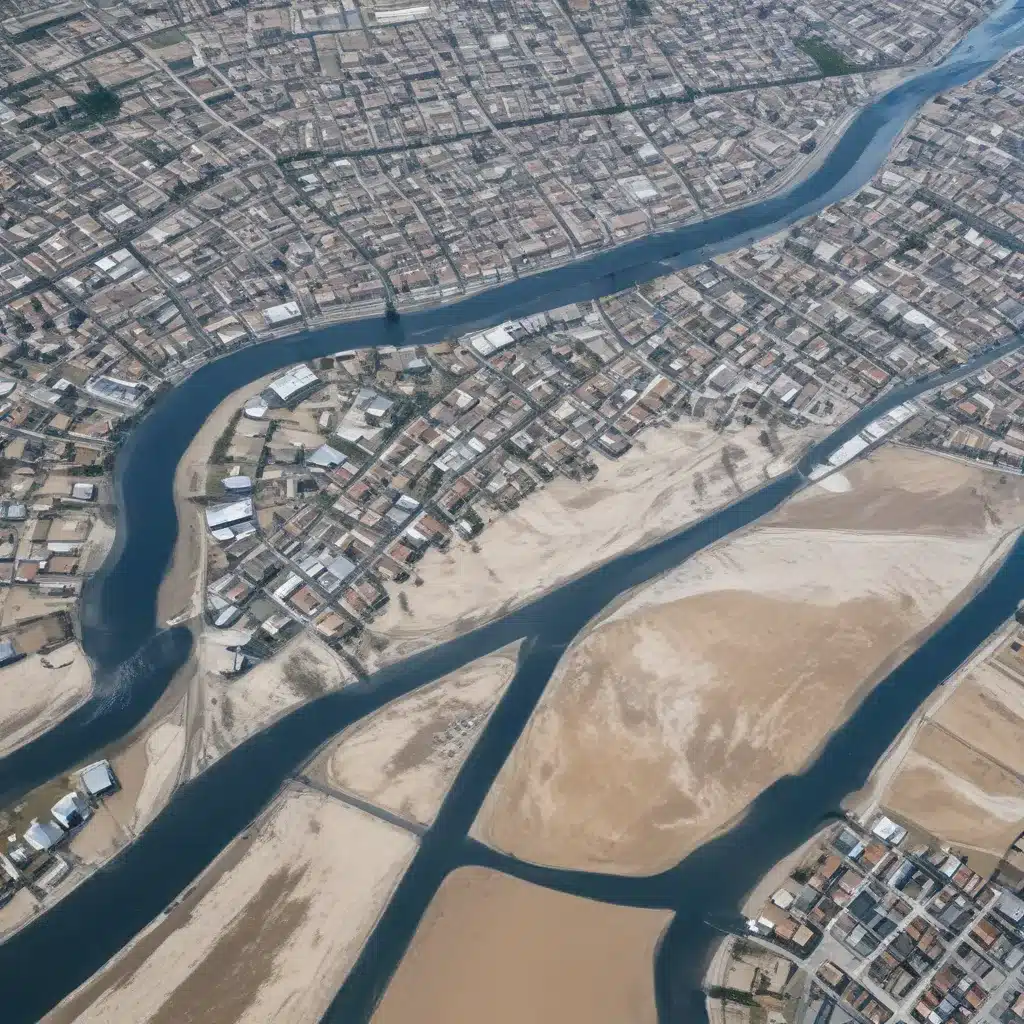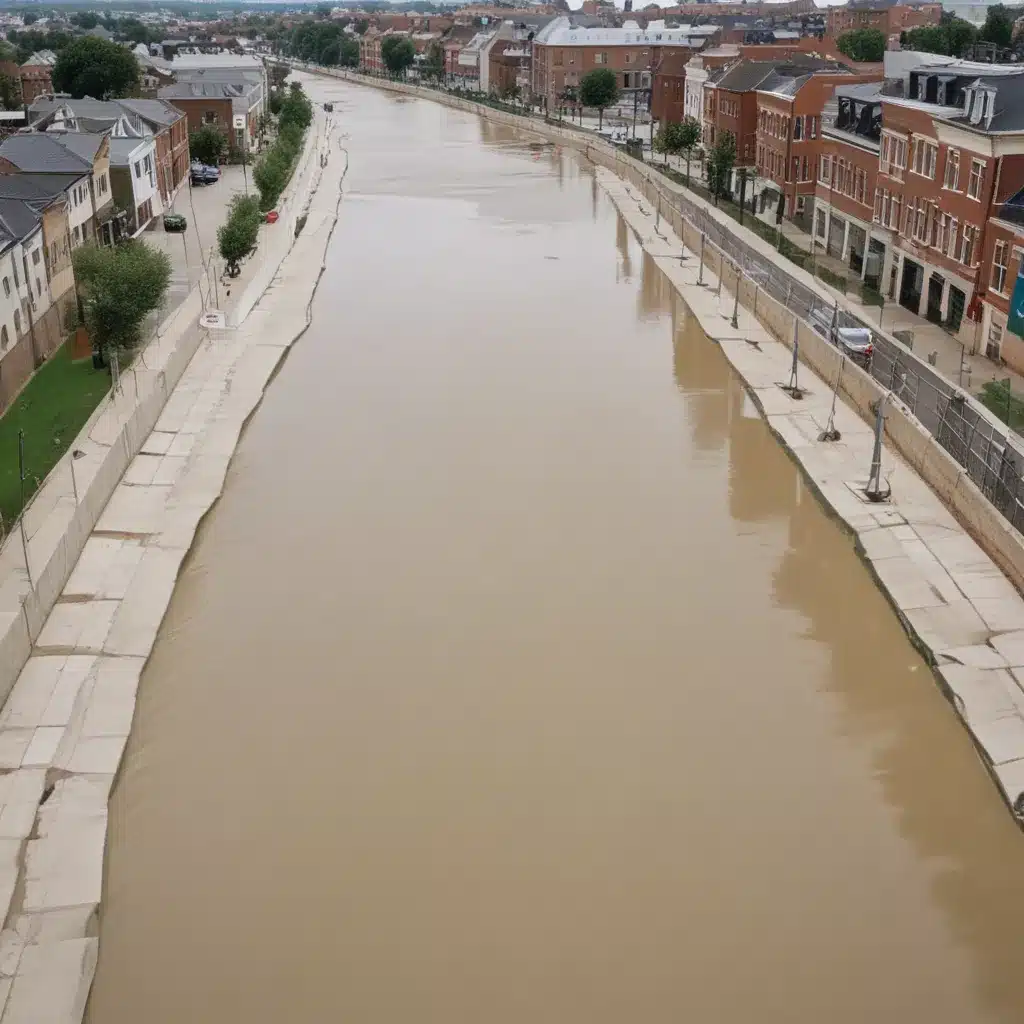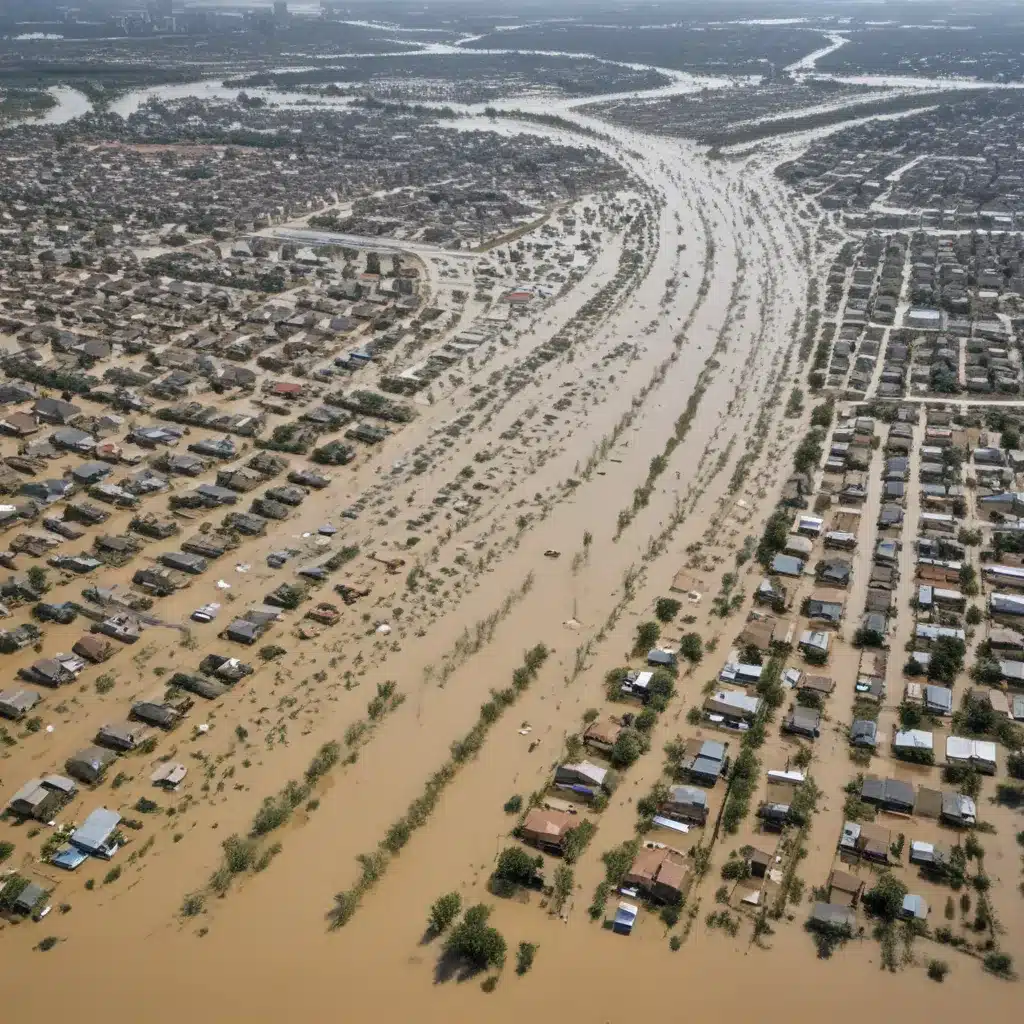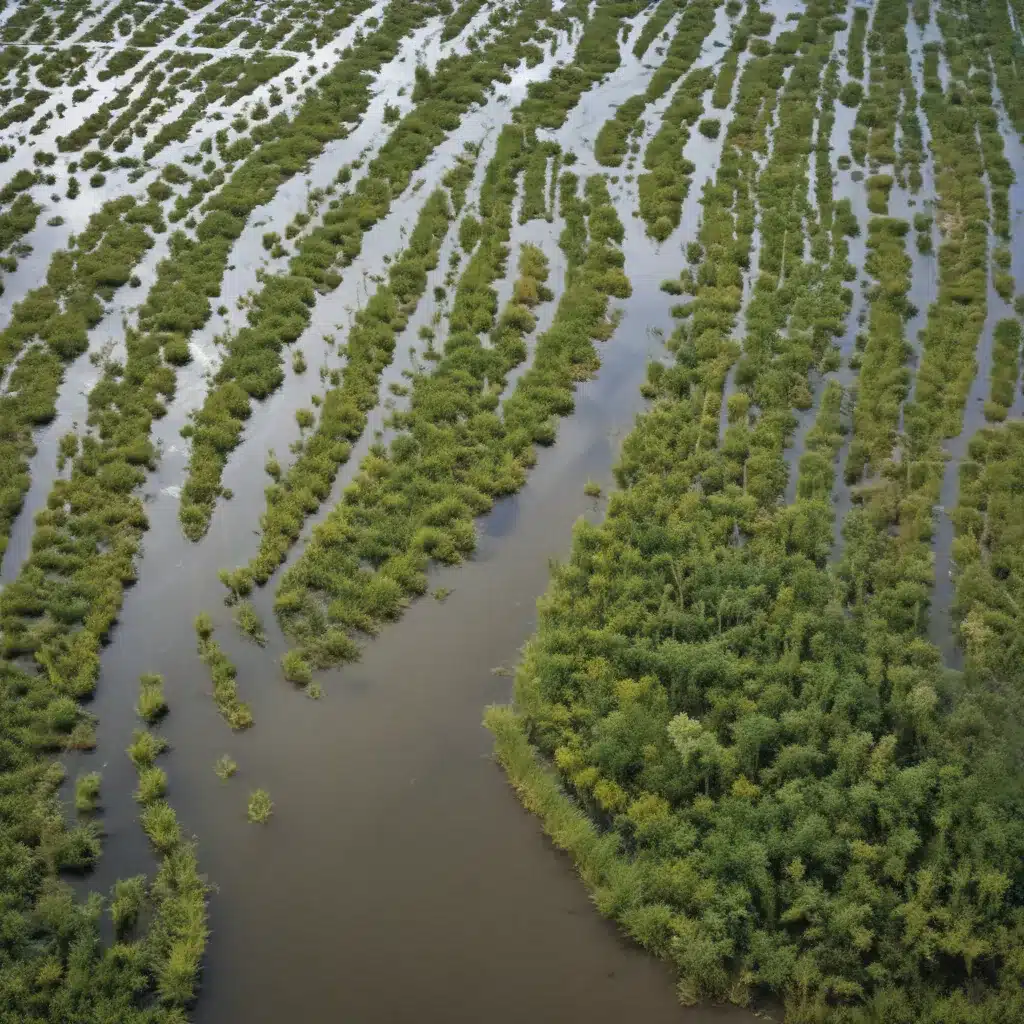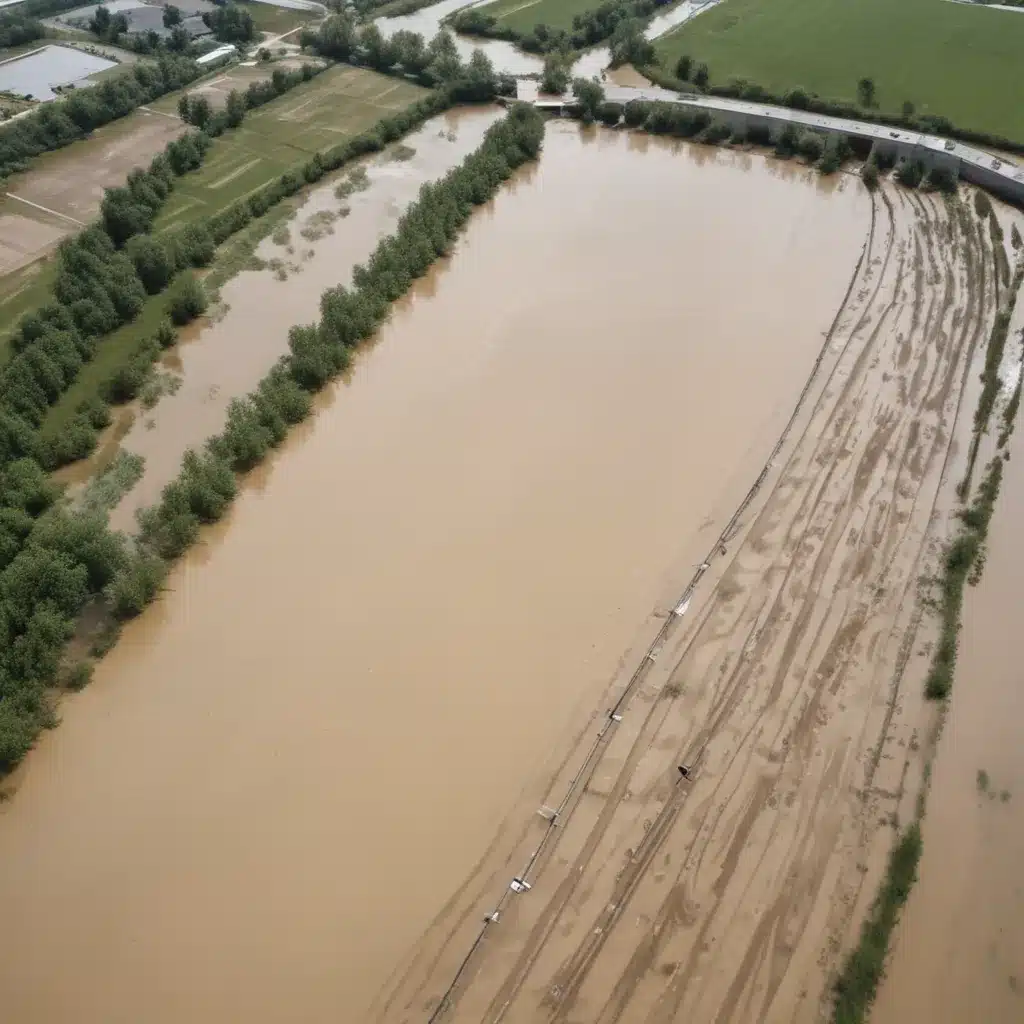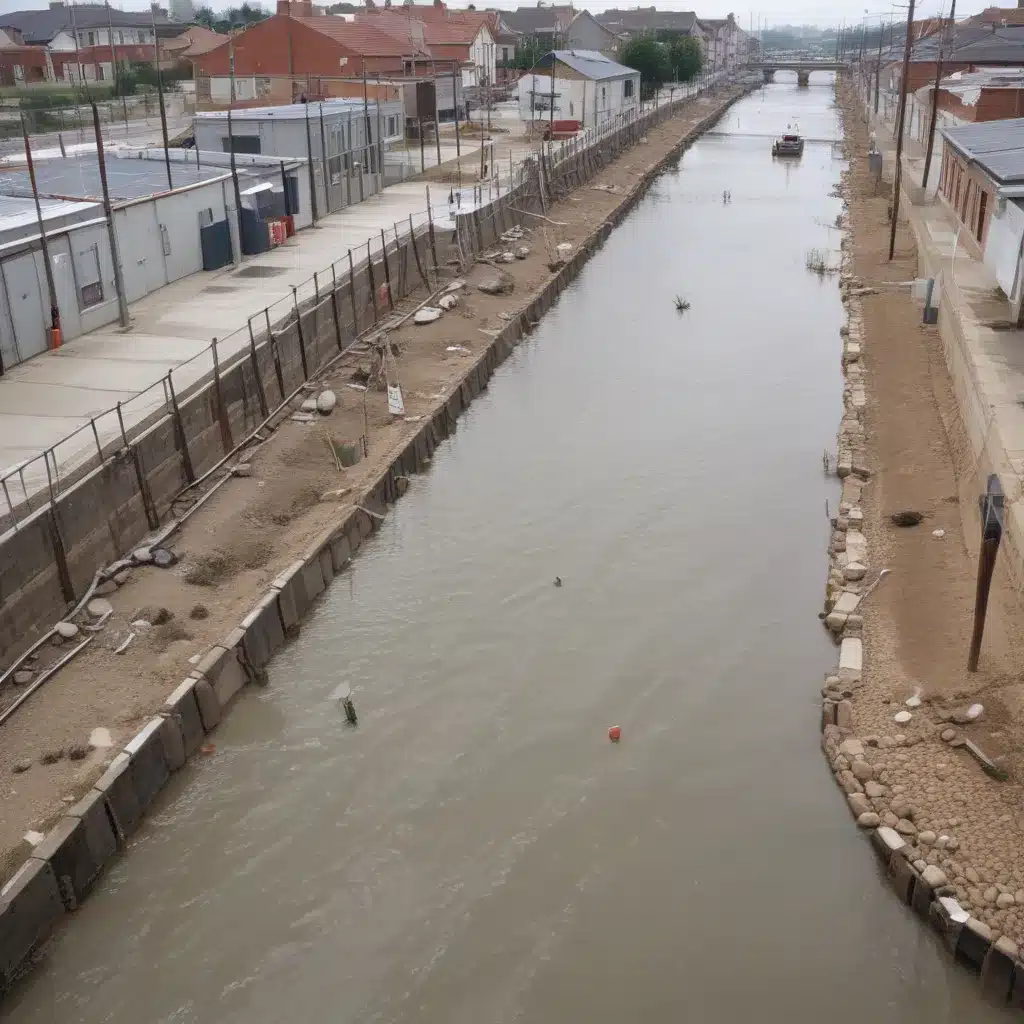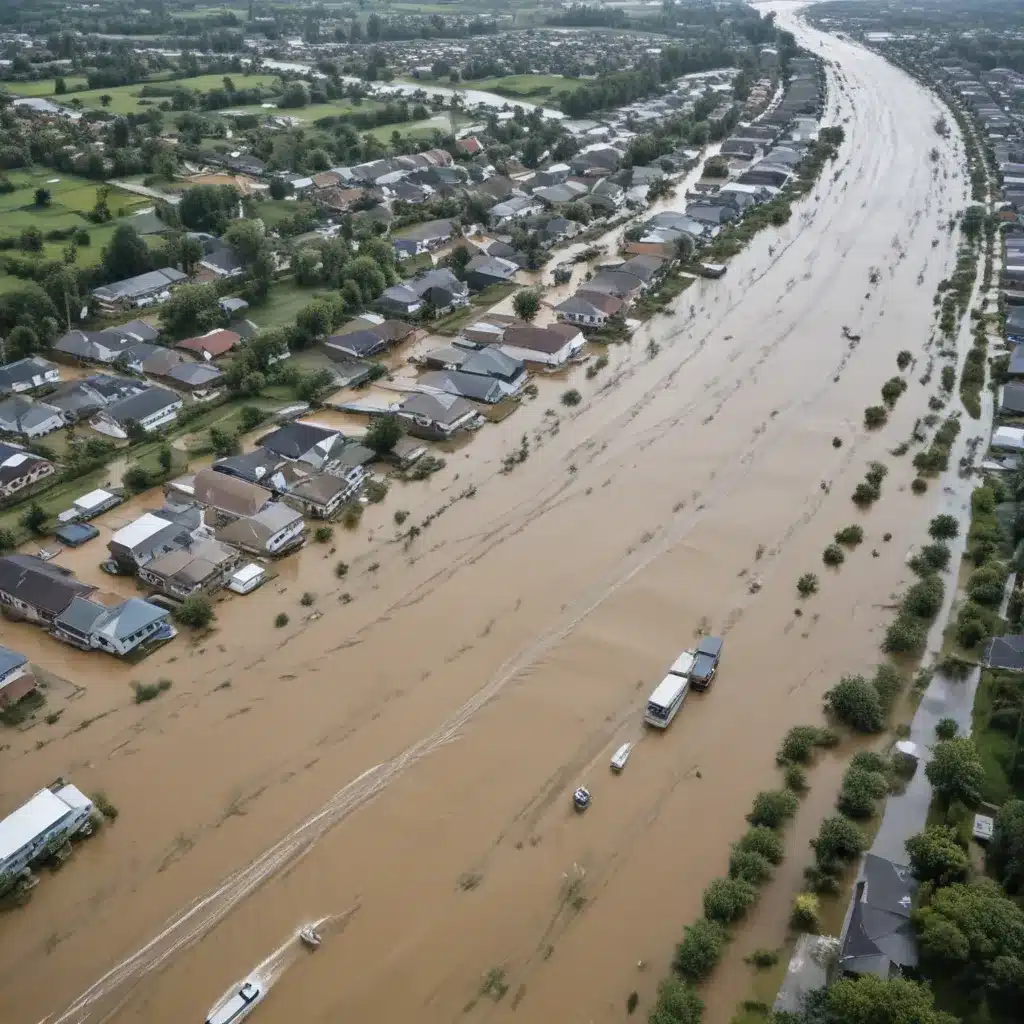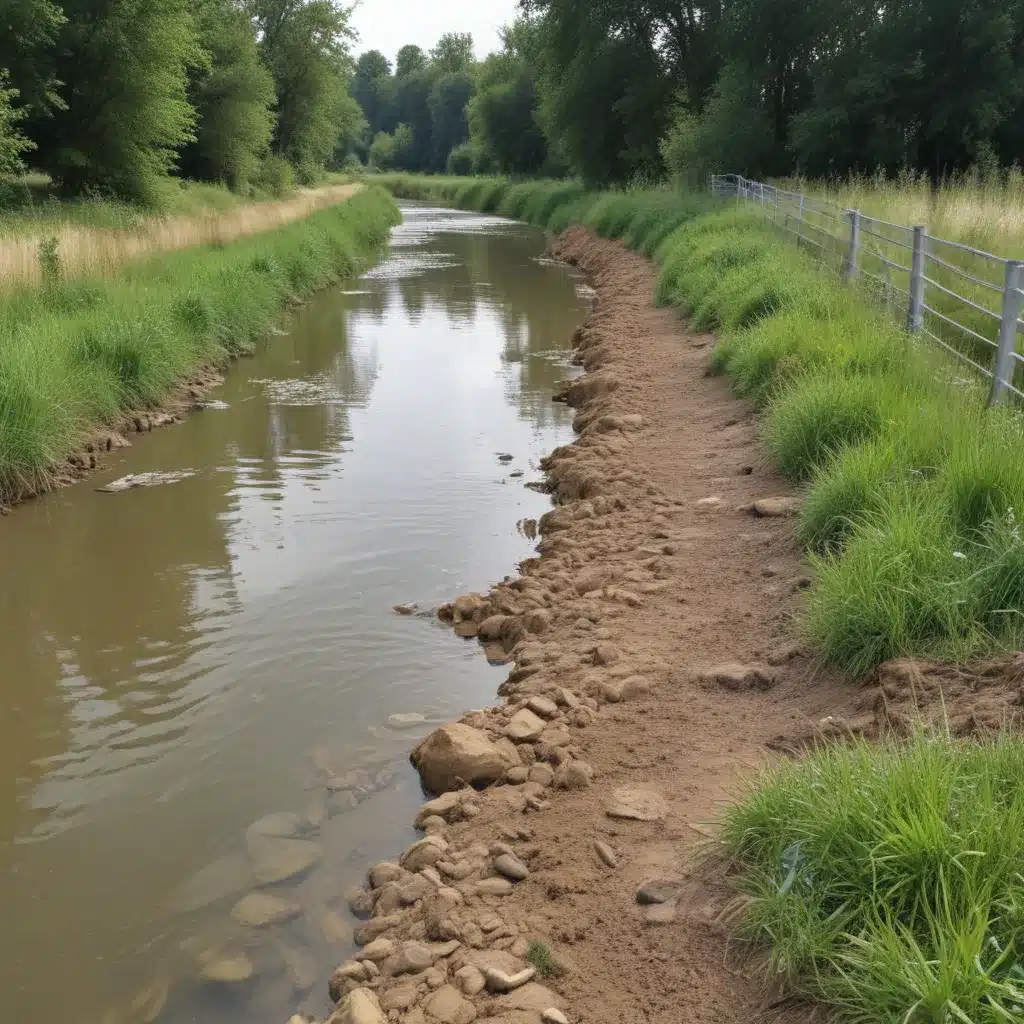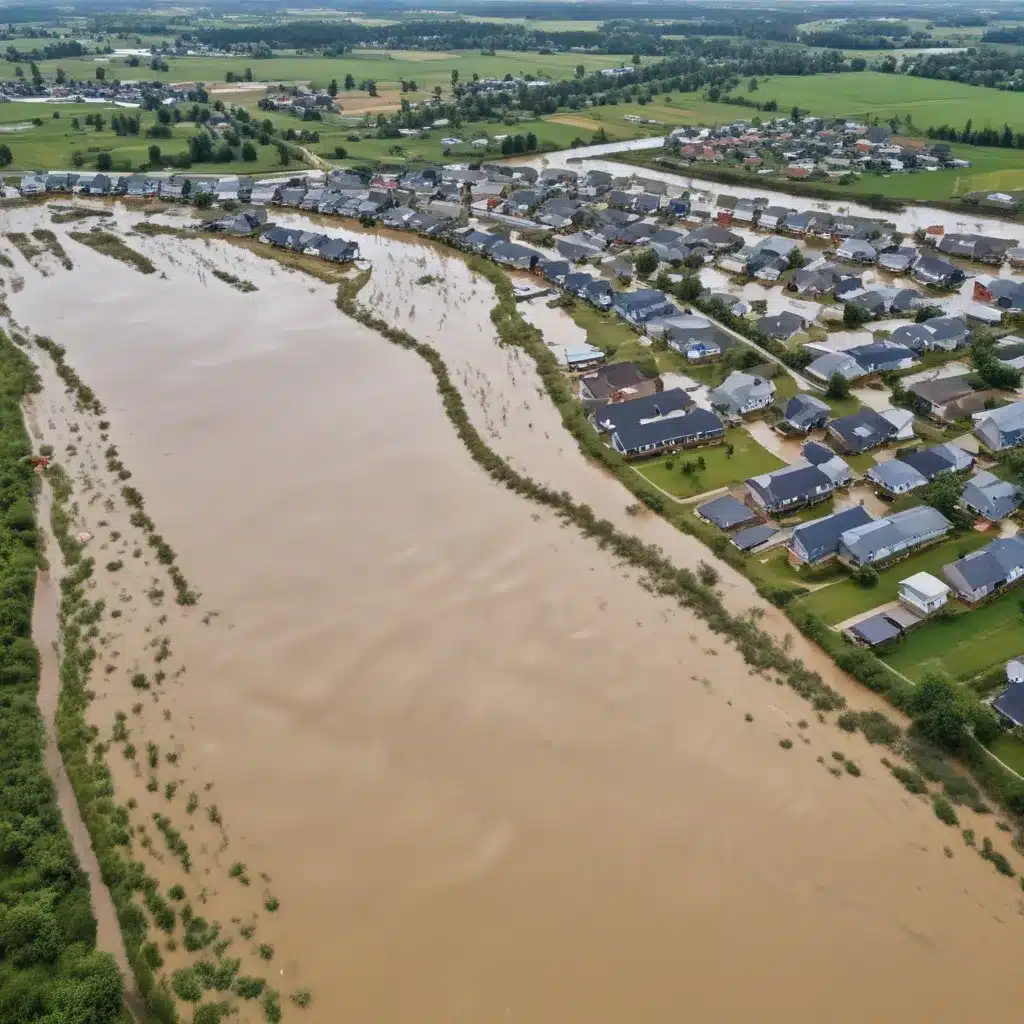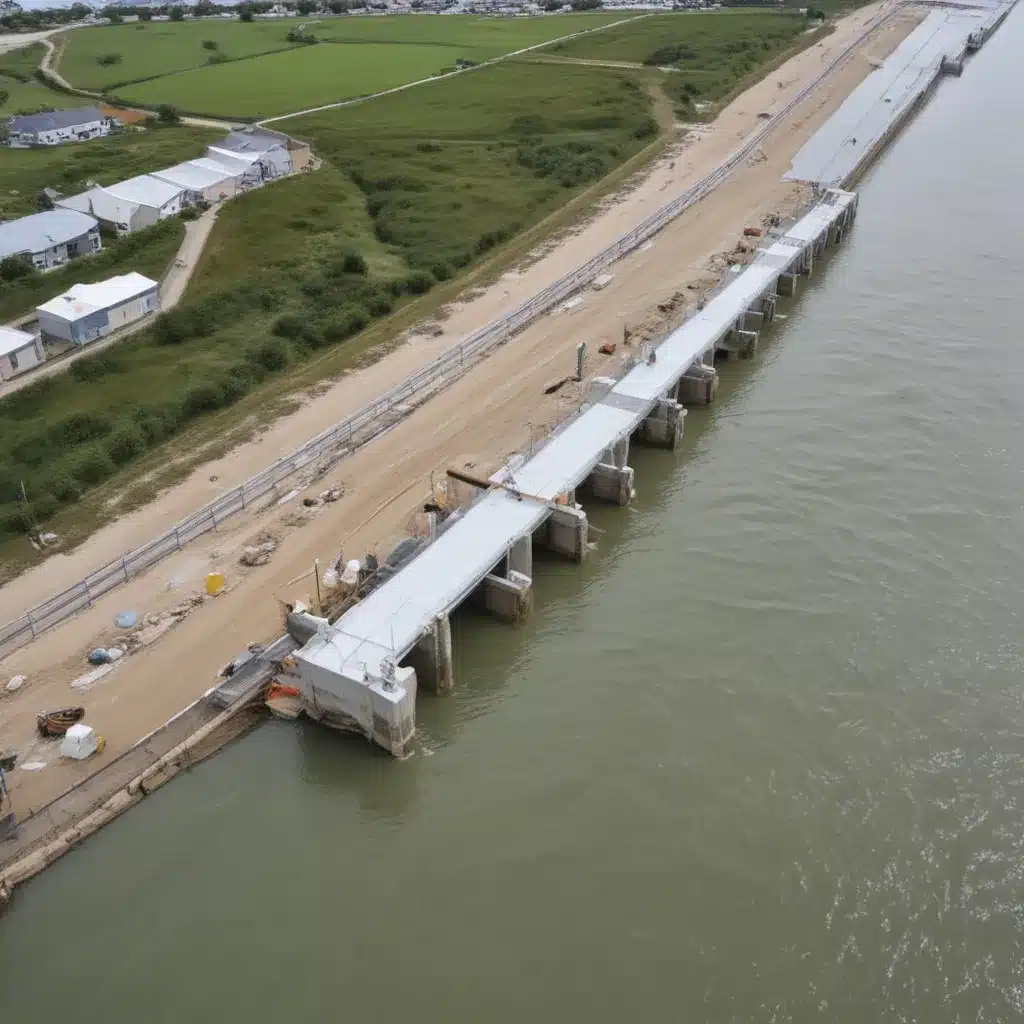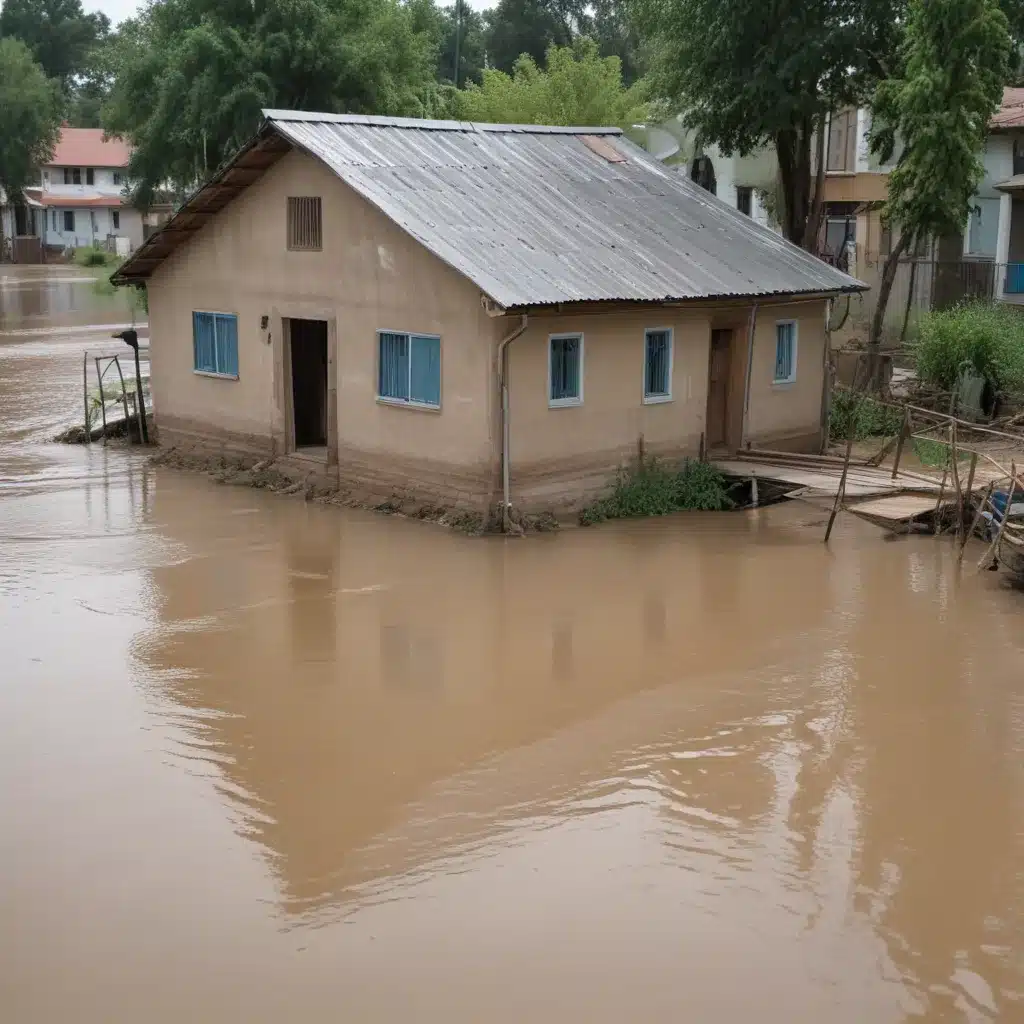When it comes to flood management, there is a wide range of techniques that are implemented around the world. Some of these techniques may be unfamiliar to the general public. From flood control structures to sustainable urban planning, there are numerous strategies that countries employ to mitigate the devastating impact of floods. In this discussion, we will explore the various flood management techniques used globally, highlighting their effectiveness, challenges, and potential for adaptation. By examining these diverse approaches, we hope to gain a deeper understanding of how different regions tackle the perennial issue of flooding. So, let’s dive into the world of flood management and discover the innovative ways in which countries address this pressing concern.
Key Takeaways
- Flood control structures play a crucial role in managing floods, such as levees, flood walls, floodgates, and flood channels.
- Efficient drainage systems, including river diversion and green infrastructure, are important for collecting and removing water during floods.
- Floodplain zoning regulations, like those in the Netherlands, are essential for restricting development in flood-prone areas and reducing flood risks.
- Early warning systems, including timely information, preparedness, and community engagement, are vital for mitigating flood impacts and ensuring community safety.
Flood Control Structures
Flood control structures play a crucial role in mitigating the impact of floods by actively managing the flow of water. These structures are essential flood control measures and are designed to prevent or reduce the damage caused by flooding. In recent years, innovative flood control techniques have been developed to improve the effectiveness of these structures.
One such technique is the construction of levees and flood walls. Levees are embankments built along the banks of rivers or other bodies of water to prevent water from overflowing and flooding nearby areas. Flood walls, on the other hand, are vertical barriers made of concrete or other materials that are used to contain floodwaters. These structures work together to divert and control the flow of water, minimizing the risk of flooding.
Another innovative flood control measure is the use of floodgates and flood channels. Floodgates are gates or barriers that can be opened or closed to control the flow of water. They are often used to regulate the amount of water entering or leaving a particular area. Flood channels, on the other hand, are artificial waterways designed to redirect floodwaters away from vulnerable areas. By channeling the water through a controlled path, these structures help prevent widespread flooding.
Drainage Systems
When it comes to flood management, drainage systems play a crucial role in channeling excess water and improving flow capacity. These systems are designed to efficiently collect and remove water from urban areas, preventing it from accumulating and causing flooding. By effectively directing water away from vulnerable areas, drainage systems help mitigate the risk of damage and ensure the safety of communities.
Channeling Excess Water
One effective technique for managing excess water during floods is the implementation of efficient drainage systems. These systems play a crucial role in channeling excess water away from vulnerable areas, reducing the risk of flooding and minimizing the damage caused by heavy rainfall. River diversion and flood diversion are two key methods used to redirect water flow and prevent it from inundating populated areas. By strategically diverting water to designated channels or reservoirs, drainage systems help maintain a balance between water supply and demand, ensuring the safety of communities and infrastructure. These innovative solutions not only protect lives and properties but also promote sustainable urban development. With continuous advancements in technology and engineering, the effectiveness and efficiency of drainage systems will only improve, offering greater resilience and adaptability in managing excess water during floods.
Improving Flow Capacity
To enhance the capacity of drainage systems, engineers and urban planners implement various strategies and technologies. When it comes to improving flow capacity, sustainable solutions are key. One approach is the use of green infrastructure, which involves incorporating natural elements like vegetation and permeable surfaces into urban landscapes. This helps to absorb and filter rainfall, reducing the amount of water that enters the drainage system. Another technique is the implementation of smart drainage systems, which utilize sensors and real-time data to optimize the flow of water. By monitoring and adjusting the drainage system in response to changing weather conditions, these smart systems can prevent overflows and minimize the risk of flooding. Furthermore, the use of underground storage tanks can provide additional capacity during heavy rainfall events, allowing excess water to be stored temporarily and gradually released. These innovative strategies not only improve flow capacity but also contribute to sustainable and resilient urban environments.
Floodplain Zoning
Floodplain zoning plays a crucial role in flood management. By implementing zoning regulations, we can effectively control land use and development in flood-prone areas, reducing the risk of damage caused by flooding. The benefits of floodplain zoning include protecting lives and property, preserving natural habitats, and promoting sustainable development in flood-prone regions.
Zoning Regulations Effectiveness
Zoning regulations play a crucial role in effectively managing floodplains around the world. By implementing zoning regulations, governments can balance the need for urban development with the need to mitigate flood risk. These regulations designate areas within floodplains where development is restricted or prohibited altogether, ensuring that vulnerable areas are protected from potential flood damage.
To emphasize the importance of zoning regulations, let’s take a look at a comparison table:
| Country | Zoning Regulations | Effectiveness |
|---|---|---|
| Netherlands | Strict regulations | Highly effective |
| United States | Varying regulations | Mixed effectiveness |
| China | Weak regulations | Less effective |
As seen in the table, countries with stricter zoning regulations, like the Netherlands, have been more successful in managing flood risk and minimizing damage caused by floods. This highlights the importance of robust zoning regulations in floodplain management. It is crucial for governments to prioritize innovation and implement effective zoning strategies to protect communities from the devastating impacts of floods.
Benefits of Floodplain Zoning
After understanding the importance of zoning regulations in floodplain management, we can now explore the significant benefits that floodplain zoning offers. Floodplain zoning is an essential component of effective floodplain management strategies, providing numerous advantages for communities striving for resilience.
Benefits of Floodplain Zoning:
- Reduced flood risk: By designating specific areas as floodplains and restricting development in those zones, floodplain zoning helps minimize the risk of flood damage to properties and infrastructure.
- Enhanced community safety: Through floodplain zoning, communities can ensure that areas prone to flooding are not populated, thereby safeguarding the lives of residents and minimizing potential injuries during flood events.
- Preservation of natural ecosystems: Floodplain zoning supports the protection and preservation of natural habitats, allowing ecosystems to thrive and contributing to environmental sustainability.
- Long-term economic savings: By preventing flood damage to properties and infrastructure, floodplain zoning can result in significant cost savings for communities, reducing the need for expensive post-flood recovery efforts.
Floodplain zoning is a proactive and innovative approach that fosters community resilience and ensures a safer, more sustainable future.
Early Warning Systems
How can we effectively implement early warning systems to mitigate the impact of floods worldwide? Early warning systems play a crucial role in flood management, as they provide timely information to communities and authorities, allowing them to take appropriate actions and minimize the damage caused by floods. These systems rely on flood forecasting, which uses various data sources to predict the occurrence, intensity, and location of floods.
To implement effective early warning systems, we need to harness the power of innovation and technology. One promising approach is the use of advanced remote sensing techniques, such as satellite imagery and radar systems, to monitor weather patterns and water levels in real time. By integrating these data sources with sophisticated modeling and simulation tools, we can improve the accuracy and timeliness of flood forecasts.
Furthermore, the advent of the Internet of Things (IoT) offers exciting possibilities for early warning systems. By deploying smart sensors and devices in flood-prone areas, we can gather valuable data on rainfall, river levels, and soil moisture. This data can be transmitted in real-time to a centralized system, which can then generate accurate flood forecasts and issue timely warnings to the affected communities.
In addition to technological advancements, community engagement, and education are critical for the successful implementation of early warning systems. People need to be aware of the risks posed by floods and understand how to respond to warnings effectively. This can be achieved through awareness campaigns, training programs, and the development of user-friendly mobile applications that deliver personalized flood alerts and evacuation routes.
Natural Flood Management
Natural flood management techniques have gained recognition due to their numerous benefits. By working with nature, these methods can help reduce flood risk, improve water quality, and enhance biodiversity. Through case studies and examples, we will explore how natural flood management strategies have been successfully implemented in different parts of the world, highlighting their effectiveness and potential for mitigating the impacts of flooding.
Benefits of Natural Methods
Implementing natural flood management techniques offers numerous benefits to communities and the environment alike. Here are some reasons why these methods are highly valued:
- Ecological benefits: Natural flood management techniques focus on restoring and enhancing natural ecosystems, such as wetlands and forests. These ecosystems act as natural sponges, absorbing and storing water, thereby reducing flood risk. Additionally, they help improve water quality, enhance biodiversity, and provide habitats for various species.
- Cost-effectiveness: Natural flood management techniques are often more cost-effective compared to traditional engineering solutions. They involve working with nature rather than against it, which can be less expensive to implement and maintain in the long run. This approach also provides multiple benefits beyond flood management, such as carbon sequestration and recreational opportunities.
- Community engagement: Natural flood management techniques encourage community involvement and collaboration. Residents can actively participate in the planning and implementation of these measures, fostering a sense of ownership and empowerment.
- Climate resilience: Natural flood management techniques contribute to building climate resilience by adapting to the changing environment. They help communities become more resilient to extreme weather events, such as heavy rainfall and storms, while also mitigating the impacts of climate change.
Case Studies and Examples
One notable example of natural flood management techniques is the River Otter Beaver Trial in Devon, England. This case study offers valuable insights into the effectiveness of using beavers to manage flooding. By allowing beavers to build dams and alter the landscape, the River Otter Beaver Trial has shown promising results in reducing flood risk and improving water quality. The success of this project highlights the potential of natural methods in flood management on a global scale. By studying case studies like this, we can gain a better understanding of the benefits and limitations of natural flood management techniques. This global perspective allows us to identify innovative solutions that can be adapted to different environments and contribute to more sustainable flood management strategies worldwide.
Dams and Reservoirs
Dams and reservoirs play a crucial role in flood management worldwide. These structures offer several benefits when it comes to managing floods effectively and mitigating their impact on communities and ecosystems. Here are some key points to consider:
- Water storage: Dams and reservoirs provide a means to store excess water during heavy rainfall or snowmelt. By capturing and holding water, they help reduce the volume and velocity of floodwaters downstream, minimizing the risk of flooding in vulnerable areas.
- Flood control: Dams can release stored water in a controlled manner, allowing for gradual and controlled downstream flow. This controlled release helps prevent sudden and catastrophic flooding, providing communities with valuable time to respond and evacuate if necessary.
- Hydropower generation: Many dams are equipped with hydroelectric power plants, harnessing the force of flowing water to generate clean and renewable energy. This not only contributes to sustainable development but also provides a reliable source of electricity for flood-prone areas, ensuring continuous power supply during and after flood events.
- Recreation and water supply: Reservoirs created by dams often serve as popular recreational areas for boating, fishing, and other water-based activities. Additionally, they can act as reservoirs for drinking water, providing a reliable supply even during droughts or emergencies.
While dams and reservoirs offer significant flood management benefits, it’s important to acknowledge their potential impact on the environment. Altering natural river flows and ecosystems can affect fish populations, disrupt sediment transport, and modify the overall habitat. However, through careful planning and implementation, innovative solutions can be developed to minimize these impacts and create a more sustainable approach to flood management.
Coastal Protection Measures
To effectively protect coastal areas from flooding and erosion, various measures are implemented around the world. Coastal erosion is a significant problem that threatens coastal communities and ecosystems. Therefore, innovative solutions are being developed to combat this issue. One such technique is beach nourishment, which involves adding sand or sediment to beaches to replenish their natural defenses.
Beach nourishment is a popular coastal protection measure utilized in many countries. Increasing the volume of sand on the beach, helps to widen the coastline, creating a buffer zone against storm surges and reducing the risk of flooding. This technique not only protects coastal infrastructure but also preserves the natural beauty and recreational value of the beach.
To better understand the effectiveness of beach nourishment techniques, let’s take a look at the following comparison table:
| Country | Method Used | Advantages |
|---|---|---|
| Netherlands | Sand Supplementation | Creates wider beaches, protects against erosion |
| United States | Dredging | Restores beachfront and protects coastal properties |
| Australia | Sand Bypassing | Prevents beach erosion and maintains natural beauty |
| Japan | Seawall Construction | Provides a physical barrier against storm surges |
| Singapore | Reclamation | Expands land area and protects coastal communities |
As you can see, countries around the world are using various techniques to combat coastal erosion and protect their coastlines. These measures not only provide immediate protection but also offer long-term solutions that can adapt to changing climate conditions. By embracing innovation and implementing effective coastal protection measures like beach nourishment, we can safeguard our coastal areas for future generations.
Flood Forecasting and Modeling
When it comes to flood forecasting and modeling, there are three key points to consider. First, data-driven flood predictions have revolutionized our ability to anticipate and prepare for floods. Second, advanced modeling techniques allow us to simulate different scenarios and assess the potential impact of floods on communities and infrastructure. Finally, early warning systems play a crucial role in alerting people to potential flood events, giving them valuable time to evacuate and protect themselves.
Data-Driven Flood Predictions
Using advanced data analysis techniques, flood forecasting and modeling provide valuable insights into predicting and managing potential flooding events. These innovative flood prediction techniques leverage the power of data to improve our understanding of flood patterns and enable more effective flood management strategies. Here are four ways in which data-driven flood predictions are revolutionizing flood mitigation efforts:
- Real-time monitoring: By continuously collecting and analyzing data from various sources such as weather forecasts, river levels, and soil moisture, flood forecasting models can provide accurate and up-to-date information about the likelihood and severity of a flood event.
- Early warning systems: By using historical flood data and advanced algorithms, predictive models can identify early warning signs and issue timely alerts to at-risk areas, allowing residents and authorities to take necessary precautions and evacuate if needed.
- Risk assessment: Data-driven flood predictions enable better assessment of flood risks by considering factors such as land use, topography, and drainage systems. This information helps in identifying vulnerable areas and developing targeted flood mitigation strategies.
- Scenario planning: By simulating different flood scenarios based on various inputs, flood forecasting models assist in developing contingency plans and evaluating the effectiveness of different flood management strategies.
Advanced Modeling Techniques
After analyzing data from various sources and identifying flood risks, advanced modeling techniques are employed to forecast and model potential flooding events. These techniques utilize advanced technology applications and simulation techniques to provide accurate and timely predictions. By incorporating the latest advancements in computer modeling and data analysis, flood forecasters can simulate different scenarios and assess the potential impact of flooding on communities and infrastructure. These advanced modeling techniques allow for a better understanding of flood dynamics, enabling decision-makers to develop more effective flood management strategies. The use of advanced technology applications and simulation techniques also helps in improving the accuracy of flood predictions, reducing the uncertainty associated with such events. As innovation continues to drive the field of flood forecasting and modeling, these advanced techniques will play a critical role in mitigating the devastating impacts of floods on societies around the world.
Early Warning Systems
To effectively manage floods, early warning systems incorporating flood forecasting and modeling are crucial. These systems rely on data-driven flood predictions to provide timely alerts and enable proactive decision-making. Here are some key features of innovative early warning systems:
- Real-time Monitoring: Continuous monitoring of rainfall, river levels, and weather conditions allows for early detection of potential flood events.
- Advanced Modeling Techniques: Sophisticated mathematical models are used to simulate flood behavior and predict its impact on communities and infrastructure.
- Risk Assessment and Mapping: GIS technology is utilized to map vulnerable areas and assess the potential severity of flooding.
- Automated Alerts and Communication: Automated systems deliver timely warnings to authorities, emergency responders, and the public, ensuring a coordinated response.
Ecosystem-Based Approaches
By considering the natural environment as a valuable resource, we can implement ecosystem-based approaches to effectively manage and mitigate floods. Ecosystem-based approaches focus on utilizing and restoring natural ecosystems to enhance their flood management capabilities. These approaches recognize the vital role that healthy ecosystems play in regulating water flow, reducing flood risks, and providing numerous co-benefits such as improved water quality, increased biodiversity, and recreational opportunities.
One key aspect of ecosystem-based approaches is ecosystem restoration. This involves restoring degraded ecosystems, such as wetlands, floodplains, and forests, to their natural state. These restored ecosystems can act as natural sponges, absorbing excess water during heavy rainfall and releasing it slowly, thereby reducing the risk of flooding downstream. Additionally, these restored ecosystems provide habitats for numerous species, enhancing biodiversity and promoting ecological resilience.
Another important concept is nature-based solutions. These involve integrating natural elements, such as vegetation, green infrastructure, and natural water retention areas, into flood management strategies. For example, constructing green roofs and rain gardens in urban areas can help absorb and retain rainwater, reducing the volume of runoff that contributes to flooding. Similarly, creating or preserving natural floodplains can provide additional storage capacity for floodwaters, helping to alleviate downstream flood risks.
Flood Insurance and Risk Assessment
Flood insurance and risk assessment play a crucial role in safeguarding communities against the financial impacts of flooding. To effectively manage flood risks, innovative approaches are being used around the world. Here are some key points to consider when it comes to flood insurance policies and risk assessment tools:
- Tailored flood insurance policies: Insurance companies are now offering policies that are specifically designed to address the unique needs of flood-prone areas. These policies take into account the location, flood history, and vulnerability of the community, providing coverage that is more comprehensive and affordable.
- Advanced risk assessment tools: With the advancement of technology, risk assessment tools are becoming more sophisticated. These tools use data analytics, artificial intelligence, and modeling techniques to accurately assess the flood risk for a particular area. This allows communities to make informed decisions about flood mitigation measures and insurance coverage.
- Collaborative risk assessment: In order to effectively manage flood risks, it is important for different stakeholders to come together and collaborate. This includes government agencies, insurance companies, scientists, and community members. By working together, they can share knowledge, data, and expertise to develop comprehensive flood risk assessment strategies.
- Incentives for risk reduction: Many insurance companies are now offering incentives for homeowners and communities to implement flood risk reduction measures. This may include discounts on premiums for installing flood barriers, elevating buildings, or implementing green infrastructure. By encouraging risk reduction, insurance companies are not only protecting their clients but also reducing their own financial exposure.
Community Engagement and Education
After considering flood insurance policies and risk assessment tools, it is essential to now explore the importance of community engagement and education in flood management. Public awareness and community participation play a crucial role in mitigating the impact of floods and fostering innovative solutions.
To engage the audience and highlight the significance of community engagement and education, let’s compare two different approaches from around the world:
| Technique | Country |
|---|---|
| Floodplain Mapping | United States |
| Early Warning System | Japan |
Floodplain mapping involves creating detailed maps that identify areas at risk of flooding. By making this information accessible to the public, individuals and communities can take proactive measures to reduce their vulnerability. This technique empowers people to make informed decisions regarding land use, construction practices, and emergency preparedness.
On the other hand, Japan has implemented an early warning system that utilizes advanced technology and real-time data to provide timely alerts to residents in flood-prone areas. By involving the community in the development and maintenance of this system, Japan has fostered a sense of ownership and responsibility among its citizens. This approach not only enhances public awareness but also encourages community participation in flood management efforts.
Both techniques exemplify the importance of community engagement and education in flood management. By promoting public awareness and involving the community, innovative solutions can be developed, leading to more effective flood management strategies. It is imperative that governments and organizations prioritize these aspects to build resilient communities and minimize the impact of floods.
Sustainable Urban Planning
To effectively manage floods and create resilient communities, sustainable urban planning is a crucial component. It involves designing cities and towns in a way that minimizes flood risks and maximizes community resilience. Here are some innovative approaches to sustainable urban planning that can help mitigate flood impacts and create more sustainable and livable cities:
- Green infrastructure: Incorporating green spaces, such as parks, gardens, and rain gardens, into urban areas can help absorb and manage excess water during heavy rainfall. By integrating natural features into the built environment, cities can reduce the risk of flooding and improve water quality. Green roofs and permeable pavements are also effective strategies for managing stormwater runoff.
- Community involvement: Engaging the community in the planning process is essential for creating flood-resilient cities. By involving residents in decision-making and empowering them with knowledge and skills, cities can build community capacity to respond to and recover from floods. This includes providing education and training on flood preparedness, as well as involving local stakeholders in the design and implementation of flood management strategies.
- Multi-functional infrastructure: Integrating flood management measures into existing urban infrastructure can yield multiple benefits. For example, creating floodplain parks or wetlands not only helps reduce flood risk but also provides recreational spaces and enhances biodiversity. By maximizing the multiple functions of infrastructure, cities can create more sustainable and resilient environments.
- Data-driven decision-making: Utilizing advanced technologies and data analytics can greatly enhance the effectiveness of sustainable urban planning. By collecting and analyzing data on flood patterns, vulnerability, and community demographics, cities can make informed decisions about where to allocate resources and prioritize interventions. This data-driven approach can lead to more targeted and efficient flood management strategies.
Emergency Response and Evacuation Plans
Developing well-coordinated and efficient emergency response and evacuation plans is essential for ensuring the safety and swift recovery of communities in flood-prone areas. To effectively respond to flood emergencies, it is crucial to have proper emergency response training and community preparedness.
Emergency response training equips individuals with the skills and knowledge needed to handle flood-related emergencies. This includes understanding flood warning systems, knowing evacuation routes, and being trained in first aid and rescue techniques. By providing comprehensive training to emergency responders, communities can ensure a swift and effective response when floods occur.
Community preparedness plays a vital role in minimizing the impact of floods. This involves creating awareness about flood risks, educating residents on the importance of emergency preparedness, and encouraging them to develop personal emergency plans. By involving the community in the planning process, innovative ideas and solutions can be generated to enhance flood response and evacuation strategies.
To illustrate the importance of emergency response and evacuation plans, let’s take a look at a comparison of different techniques used around the world:
| Country | Emergency Response Plan | Evacuation Plan | Noteworthy Innovation |
|---|---|---|---|
| Netherlands | Comprehensive and integrated | Extensive network of shelters | Flood forecasting and early warning |
| United States | Multi-agency coordination | Use of technology for alerts | Mobile apps for real-time updates |
| Japan | Detailed disaster management plan | Vertical evacuation buildings | Tsunami barriers and flood walls |
These examples demonstrate the diversity of approaches taken by different countries in their emergency response and evacuation plans. By learning from these innovative techniques and adapting them to suit local contexts, communities can strengthen their ability to respond to and recover from flood emergencies.
International Collaboration and Knowledge Sharing
How can countries collaborate and share knowledge to enhance their flood management techniques?
International collaboration and knowledge sharing are crucial for countries to improve their flood management techniques. By forming international partnerships and exchanging knowledge, countries can benefit from each other’s experiences, expertise, and innovative approaches.
Here are some ways in which countries can collaborate and share knowledge to enhance their flood management techniques:
- Establishing global networks: Creating global networks of experts and practitioners in the field of flood management can facilitate the exchange of information, best practices, and lessons learned. These networks can promote collaboration and provide a platform for sharing innovative ideas.
- Organizing international conferences and workshops: Conferences and workshops focused on flood management can bring together professionals and researchers from different countries. These events provide opportunities for knowledge exchange, discussions, and the exploration of new approaches and technologies.
- Conducting joint research projects: Collaborative research projects involving experts from different countries can lead to breakthroughs in flood management techniques. By combining resources, expertise, and data, countries can work together to develop innovative solutions to common challenges.
- Sharing data and information: Establishing platforms for sharing data and information related to flood management can greatly enhance the effectiveness of flood response efforts. By sharing real-time data, countries can improve their forecasting capabilities and make more informed decisions during flood events.
Monitoring and Evaluation of Flood Management Measures
Collaborating and sharing knowledge on flood management techniques can lead to more effective monitoring and evaluation of flood management measures. To ensure the success of flood management strategies, it is crucial to have robust monitoring techniques and evaluation methods in place.
Monitoring techniques play a vital role in flood management as they help in tracking the effectiveness of implemented measures. These techniques involve continuous monitoring of flood-prone areas, water levels, rainfall patterns, and river flow rates. Remote sensing technologies, such as satellite imagery and aerial surveys, can provide real-time data on flood extent and severity, enabling authorities to take immediate action. Additionally, the use of advanced sensors and gauges can help in collecting accurate data on water levels and weather conditions, allowing for timely flood predictions and warnings.
Evaluation methods are equally important in assessing the performance of flood management measures. These methods involve analyzing the impact and outcomes of implemented strategies. One commonly used evaluation method is the cost-benefit analysis, which compares the economic benefits of flood prevention measures with their associated costs. Other evaluation methods include social impact assessments, environmental impact assessments, and community feedback surveys. These methods help in understanding the effectiveness of flood management measures from various perspectives, ensuring that the strategies are meeting the desired goals and objectives.
Innovative technologies, such as machine learning and data analytics, are also being employed to enhance monitoring and evaluation processes. These technologies can analyze large datasets and identify patterns and trends, enabling authorities to make informed decisions regarding flood management strategies. Furthermore, the integration of real-time monitoring systems with decision support tools can facilitate rapid response and adaptive management.

